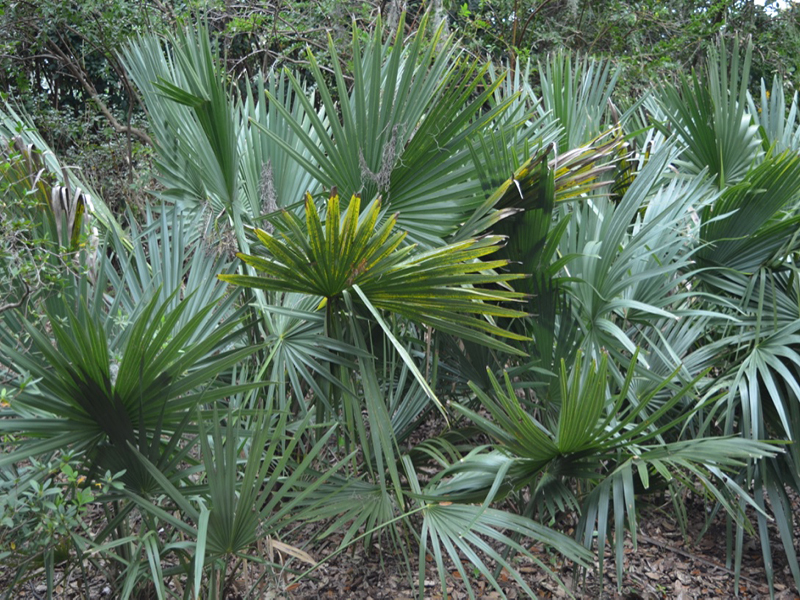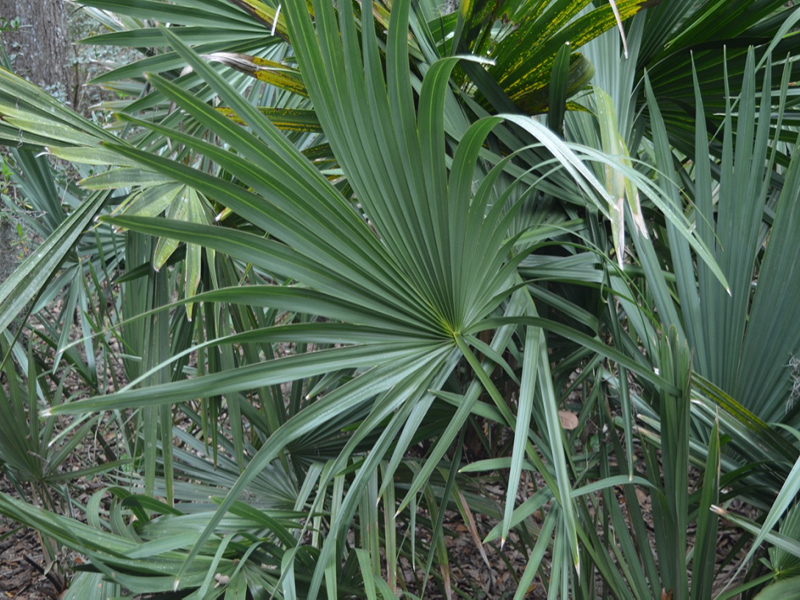
Tropicals, Woody > Sabal > Sabal minor > Sabal minor
Sabal minor
Dwarf Palmetto, Bluestem Palmetto, Scrub Palmetto, Bush Palmetto.
Origin: Native to the Gulf Coast States and Florida.
| Family |
| Arecaceae |
| Genus |
| Sabal |
| Species |
| minor |
| Category |
| Tropicals, Woody |
| Type |
| Shrub (evergreen) |
| USDA Hardiness Zone |
| 7b - 11 |
| Canadian Hardiness Zone |
| 8 |
| RHS Hardiness Zone |
| H5 - H1c |
| Height |
| 0.5 - 2.5 m |
| Spread |
| 1 - 1.5 m |
Photographs
Description and Growing Information
Flowering Period
| General Description |
| This shrub-like palm generally reaches a height of only 0.5 to 2.5 m. The stem is usually not visible, being either buried or very short. Sabal minor is valued for its hardiness and tropical appearance. |
| Landscape |
| Accent, border, and it will perform quite well as a specimen in a small garden. It is also impressive when massed as a tall ground cover. |
| Cultivation |
| It must have a full-sun to partial-shade position in the landscape. The plant is adaptable to many soil types as long as they are well-drained: it is drought tolerant. These palms will even grow well on relatively shallow soils. |
| ID Characteristic |
| The bluestem palmetto has a trunk that rarely emerges from the ground and rarely produces side shoots. |
| Pests |
| No pests or diseases of major concern. |
| Habitat |
| It grows primarily in the southeastern United States of America, and its natural habitat extends west to Texas and Oklahoma. |
| Bark/Stem Description |
| Grows from a single trunk, which most often grows underground. |
| Leaf Description |
| The dark green, costapalmate leaves vary in size depending on the age of the plant but may reach a length of 1.5 m. The fan-shaped leaves of the bluestem palmetto are palmately lobed and segmented with the segments split to 2/3 their length. The leaves of this palm are green to bluish-green in colour, and the petioles are unarmed. |
| Flower Description |
| The white flower petals are 2 - 3 mm long. The inflorescences of this palm exceed the length of the leaves and bear small, white flowers that are strongly fragrant. |
| Fruit Description |
| A small fruit 6 - 8 mm in diameter, glossy black in colour , the fruit ripens in the autumn. |
| Notable Specimens |
| Bok Tower Gardens, Lake Wales, Florida, United States of America. Harry P. Leu Gardens, Orlando, Florida, United States of America. |
| Propagation |
| Propagate by fresh seed which germinates readily. Transplant seedlings the following year in June or July. |
| Ethnobotanical Uses (Disclaimer) |
| Native American tribes used juice crushed from the small roots as an eye medicine to relieve irritation. Dried roots were taken for high blood pressure. |


